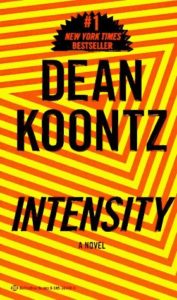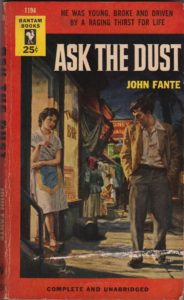by James Scott Bell
@jamesscottbell
 “I’m completely library educated. I’ve never been to college. I went down to the library when I was in grade school in Waukegan, and in high school in Los Angeles, and spent long days every summer in the library… I discovered me in the library. I went to find me in the library. Before I fell in love with libraries, I was just a six-year-old boy. The library fueled all of my curiosities, from dinosaurs to ancient Egypt.” — Ray Bradbury
“I’m completely library educated. I’ve never been to college. I went down to the library when I was in grade school in Waukegan, and in high school in Los Angeles, and spent long days every summer in the library… I discovered me in the library. I went to find me in the library. Before I fell in love with libraries, I was just a six-year-old boy. The library fueled all of my curiosities, from dinosaurs to ancient Egypt.” — Ray Bradbury
I remember how thrilled I was when I got my first library card.
It was an actual card, it had my name on it. And it meant I could go in and take books off the shelf and check them out and take them home, just like a real person.
And so many books! Shelf after shelf, there for the taking. The library back then was almost like a church. You treated the space reverently. You only spoke in a whisper, and then only if you really had to. (These days libraries sound more like greasy spoons where waitresses shout, “Gimme a ham on rye!”)
I’ve never met a writer yet who didn’t have a love of the library. Early and often reading is fundamental for a future writer. It’s how you get the structure of a well-tuned sentence into your head, how you learn to string scenes together that make readers want to turn the page.
The library is also a place of inspiration. John Fante, the great L.A. writer of the 30s, captured that in a passage from his famous novel, Ask the Dust. It’s about young Arturo Bandini who dreams about becoming a writer, and spends hours in the main branch of the L.A. library downtown.
Los Angeles, give me some of you! Los Angeles come to me the way I came to you, my feet over your streets, you pretty town I loved you so much, you sad flower in the sand, you pretty town. A day and another day and the day before, and the library with the big boys in the shelves, old Dreiser, old Mencken, all the boys down there, and I went to see them, Hya Dreiser, Hya Mencken, Hya, hya: there’s a place for me, too, and it begins with B, in the B shelf. Arturo Bandini, make way for Arturo Bandini, his slot for his book, and I sat at the table and just looked at the place where my book would be, right there close to Arnold Bennett, not much that Arnold Bennett, but I’d be there to sort of bolster up the B’s, old Arturo Bandini, one of the boys, until some girl came along, some scent of perfume through the fiction room, some click of high heels to break up the monotony of my fame. Gala day, gala dream!
When I read The Illustrated Man in junior high, I exploded with the desire to write. I’d go to my local branch and look at the Bradbury books on the shelf. The B’s! And maybe Bell would be up there someday, bolstering up the B’s….
Some years later, after I’d been published, I went to that same branch when Bradbury came to speak. He supported libraries all over town. I had him sign my copy of Zen in the Art of Writing and talked to him a bit. He loved other writers and gave me his signature and a hearty “God bless you.”
That local branch is still my home base, about seven minutes from my house.
I was in there the other day, to pick up a book I’d requested. As is my custom, I wandered past the new releases, and the mysteries and thrillers. Hya Coben, Hya Connelly, Hya Parker. I took a few off the shelf, went to a chair, and read the opening chapters. In about five minutes I could hardly wait to get back to my keyboard.
Tell us about your first encounter with a library, and how it impacted you as a writer. Do you have a favorite library now?

 Edmund Burke, the eighteenth century member of Parliament known for his rousing speeches, regarded every word in a sentence as “the feet upon which the sentence walks.” He said that to alter a word—exchange it for a shorter or longer one, or give it a different position—would change the whole course of the sentence.
Edmund Burke, the eighteenth century member of Parliament known for his rousing speeches, regarded every word in a sentence as “the feet upon which the sentence walks.” He said that to alter a word—exchange it for a shorter or longer one, or give it a different position—would change the whole course of the sentence.

